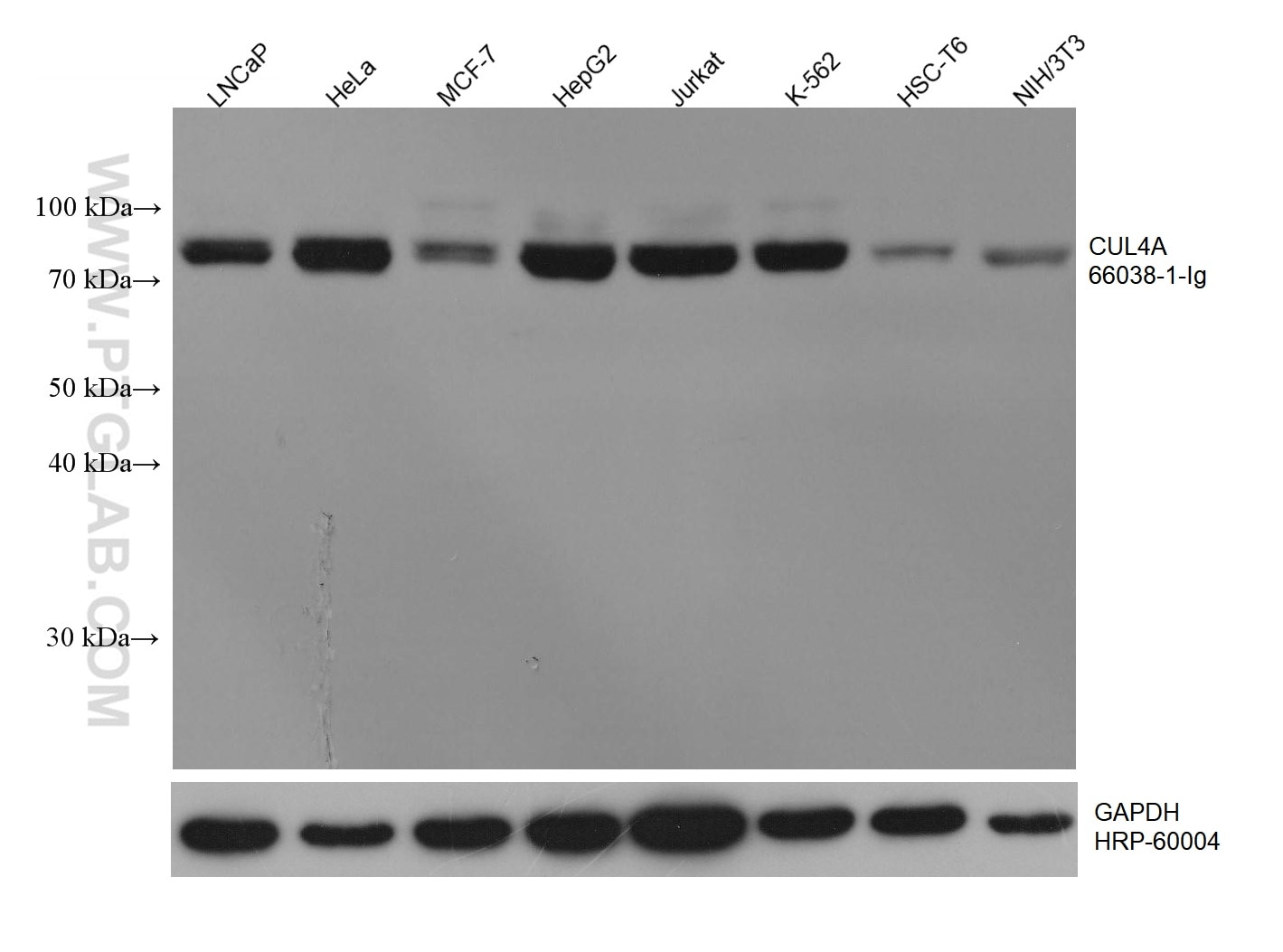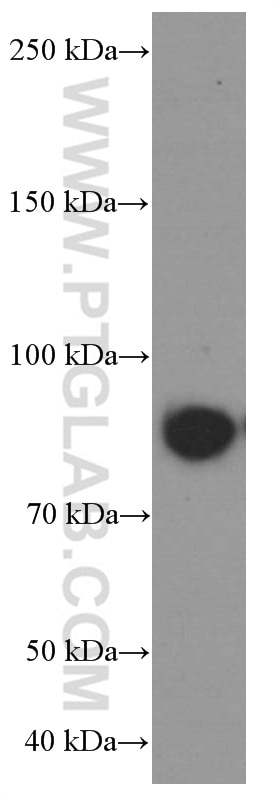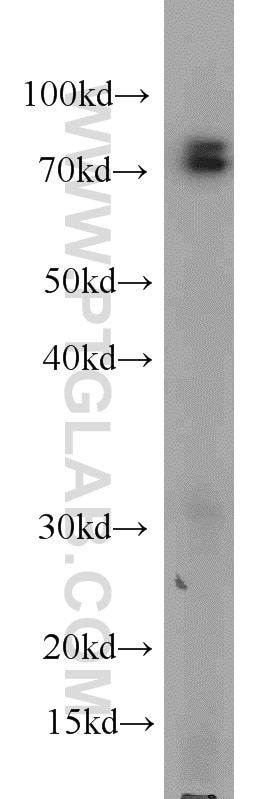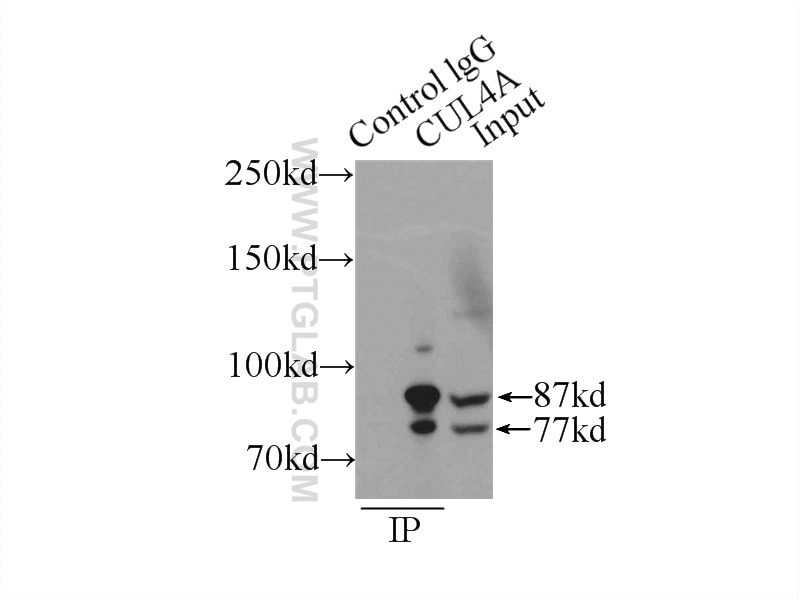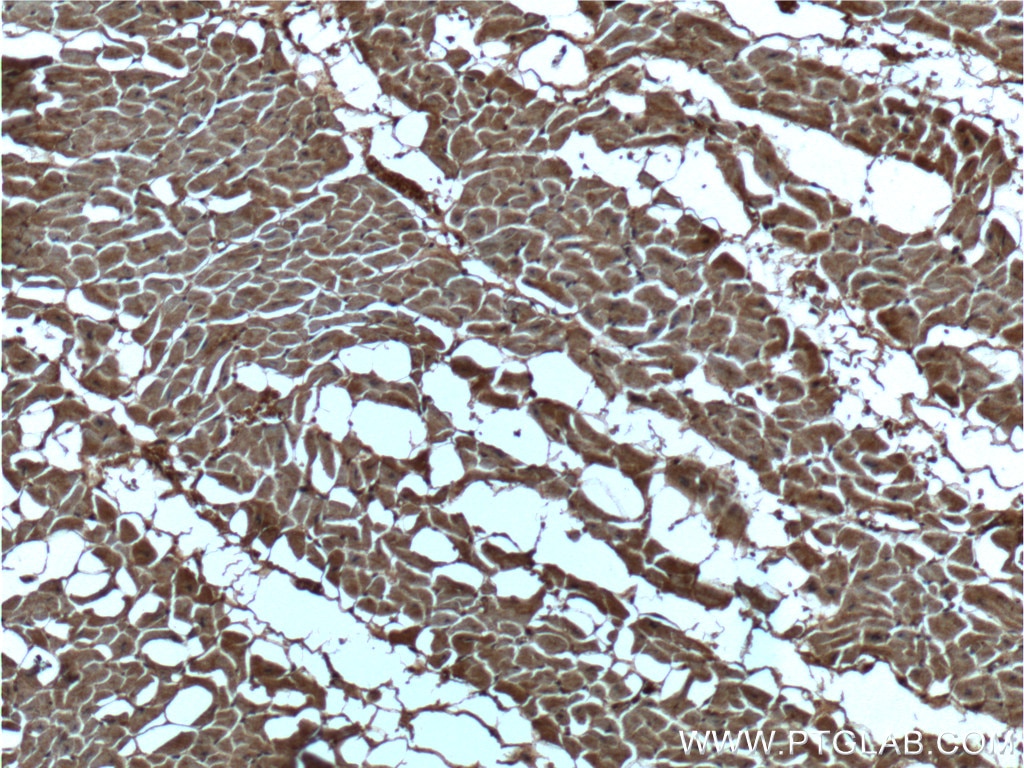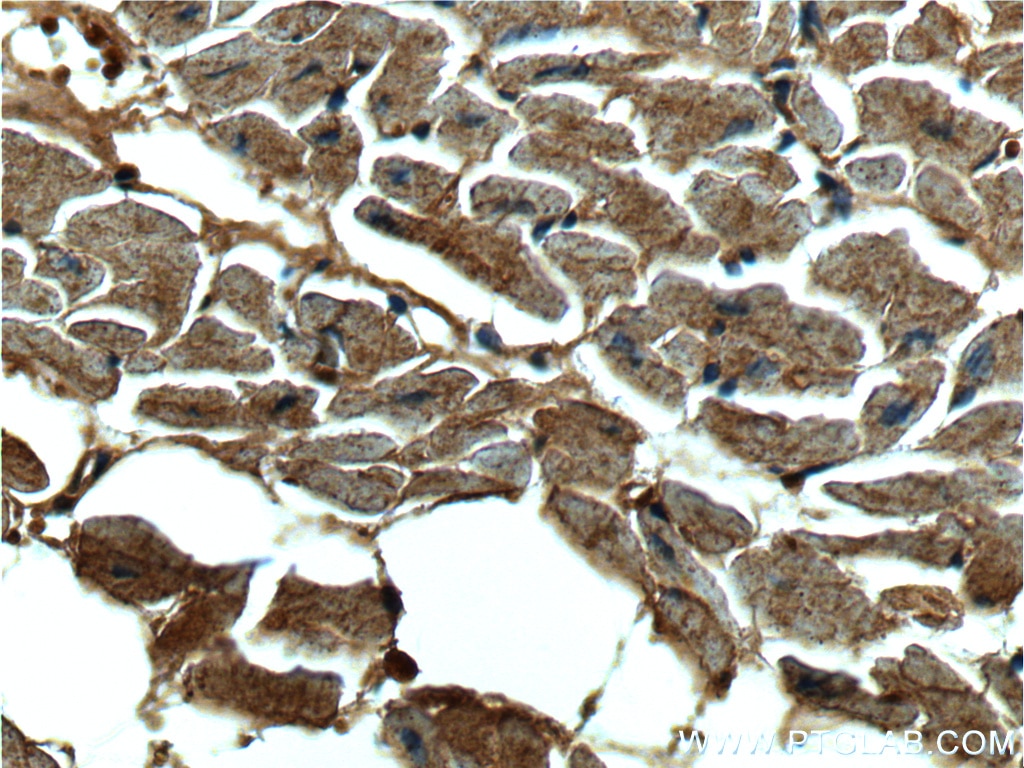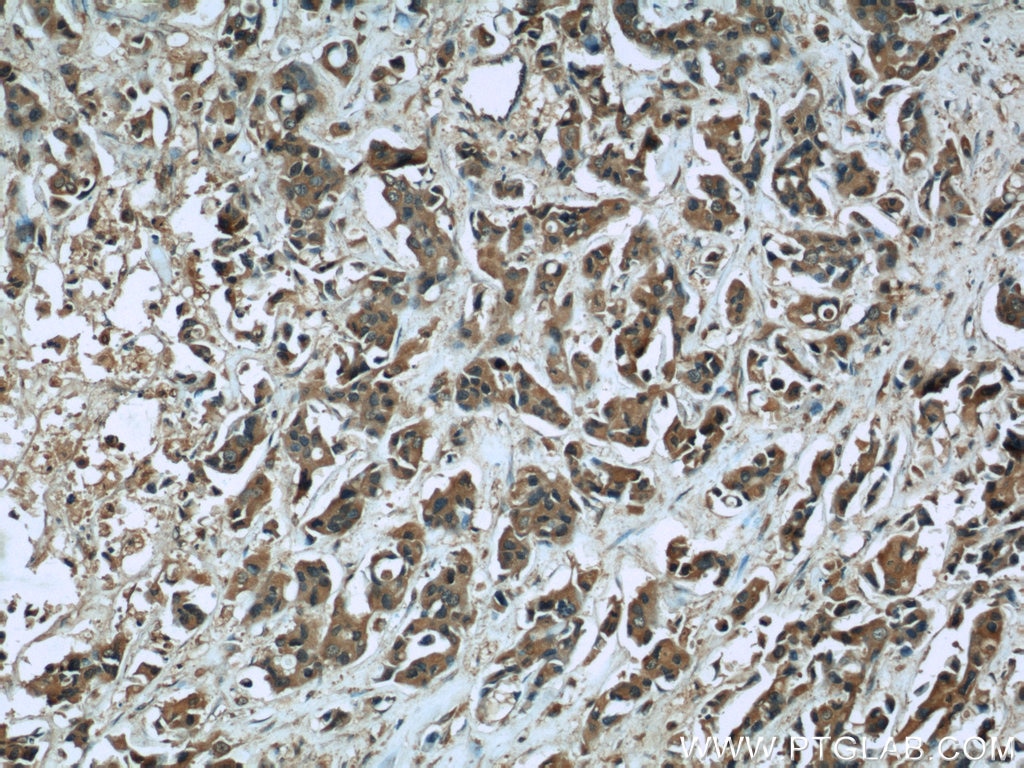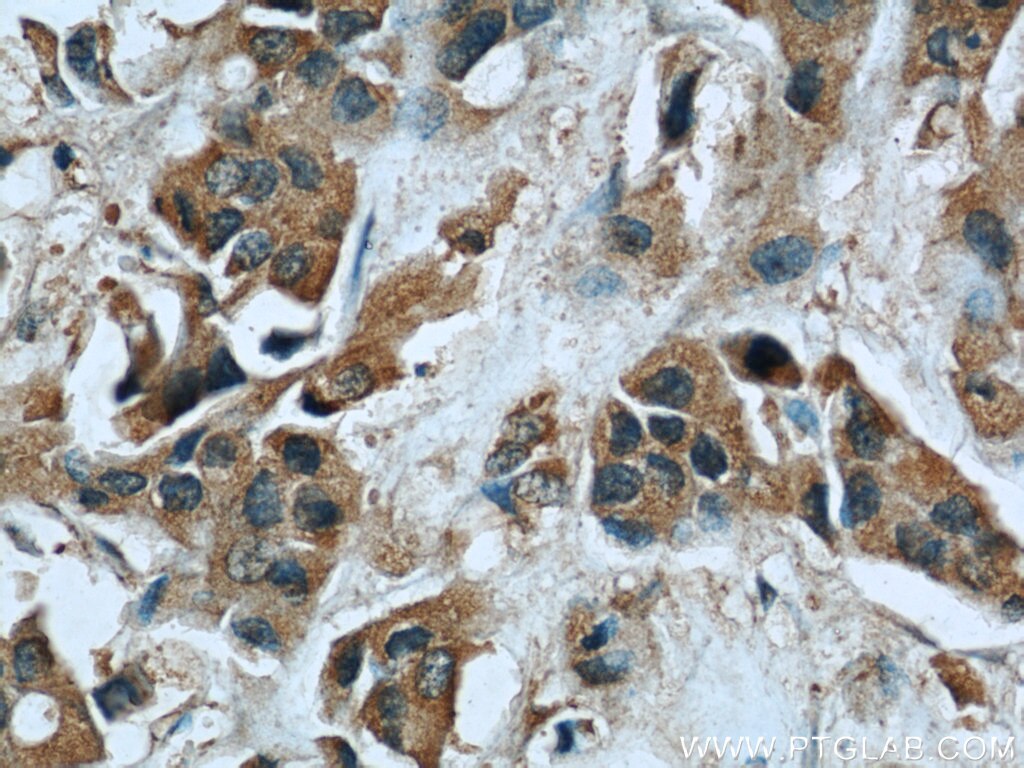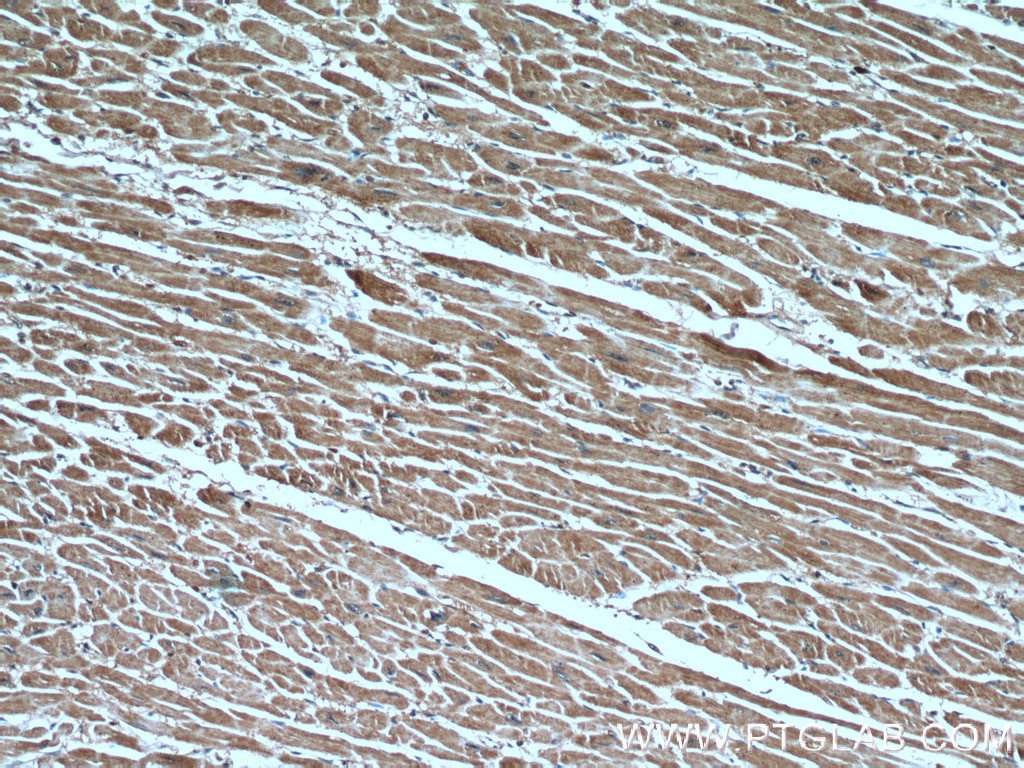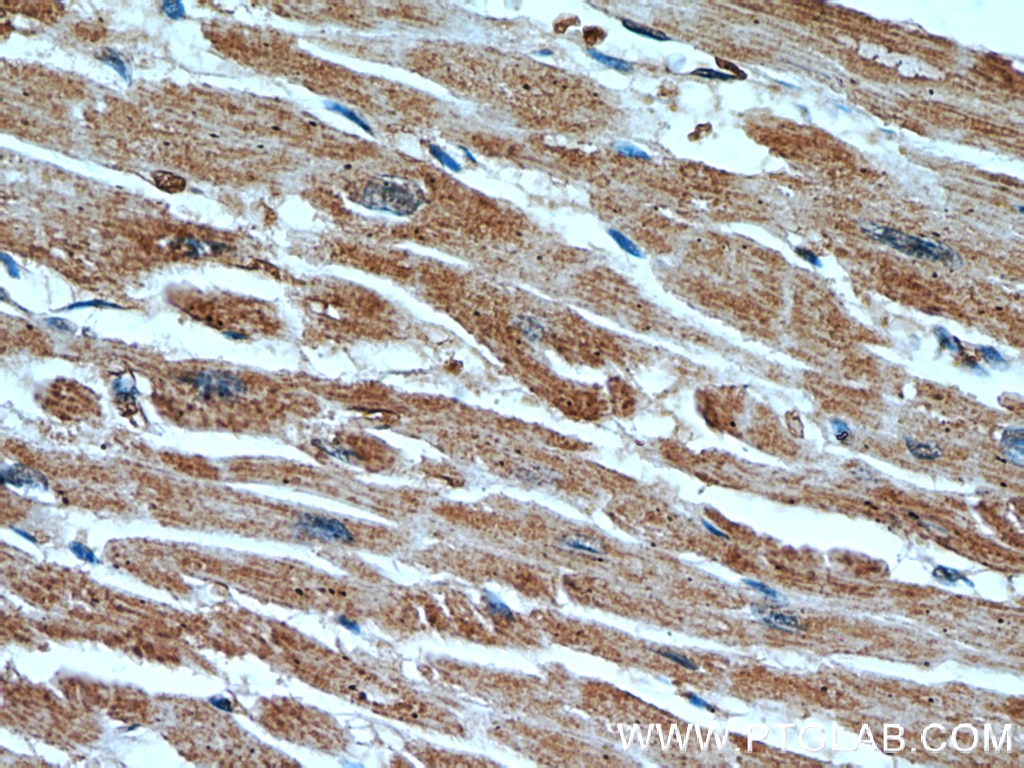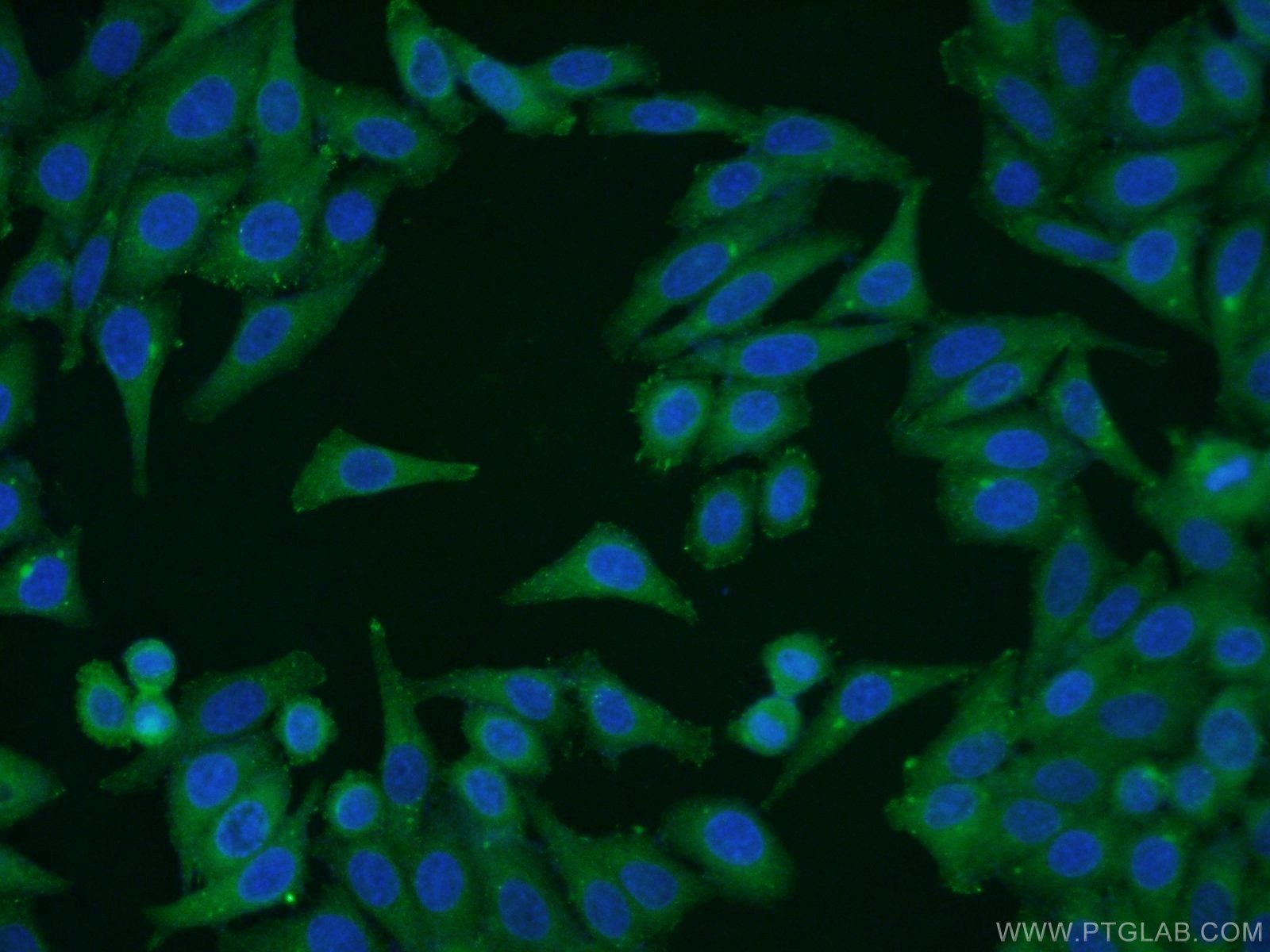- Phare
- Validé par KD/KO
Anticorps Monoclonal anti-CUL4A
CUL4A Monoclonal Antibody for IF, IHC, IP, WB, ELISA
Hôte / Isotype
Mouse / IgG1
Réactivité testée
Humain, porc, rat, singe, souris
Applications
WB, IP, IHC, IF, ELISA
Conjugaison
Non conjugué
CloneNo.
1A7F12
N° de cat : 66038-1-Ig
Synonymes
Galerie de données de validation
Applications testées
| Résultats positifs en WB | cellules LNCaP, cellules HeLa, cellules HepG2, cellules HSC-T6, cellules Jurkat, cellules K-562, cellules MCF-7, cellules NIH/3T3, tissu cérébral de porc |
| Résultats positifs en IP | cellules MCF-7 |
| Résultats positifs en IHC | tissu cardiaque humain, tissu de cancer du sein humain il est suggéré de démasquer l'antigène avec un tampon de TE buffer pH 9.0; (*) À défaut, 'le démasquage de l'antigène peut être 'effectué avec un tampon citrate pH 6,0. |
| Résultats positifs en IF | cellules HepG2 |
Dilution recommandée
| Application | Dilution |
|---|---|
| Western Blot (WB) | WB : 1:5000-1:50000 |
| Immunoprécipitation (IP) | IP : 0.5-4.0 ug for 1.0-3.0 mg of total protein lysate |
| Immunohistochimie (IHC) | IHC : 1:20-1:200 |
| Immunofluorescence (IF) | IF : 1:20-1:200 |
| It is recommended that this reagent should be titrated in each testing system to obtain optimal results. | |
| Sample-dependent, check data in validation data gallery | |
Applications publiées
| KD/KO | See 1 publications below |
| WB | See 2 publications below |
| IF | See 1 publications below |
| IP | See 1 publications below |
Informations sur le produit
66038-1-Ig cible CUL4A dans les applications de WB, IP, IHC, IF, ELISA et montre une réactivité avec des échantillons Humain, porc, rat, singe, souris
| Réactivité | Humain, porc, rat, singe, souris |
| Réactivité citée | Humain, souris |
| Hôte / Isotype | Mouse / IgG1 |
| Clonalité | Monoclonal |
| Type | Anticorps |
| Immunogène | CUL4A Protéine recombinante Ag18089 |
| Nom complet | cullin 4A |
| Masse moléculaire calculée | 77 kDa |
| Poids moléculaire observé | 77 kDa, 88 kDa |
| Numéro d’acquisition GenBank | BC008308 |
| Symbole du gène | CUL4A |
| Identification du gène (NCBI) | 8451 |
| Conjugaison | Non conjugué |
| Forme | Liquide |
| Méthode de purification | Purification par protéine A |
| Tampon de stockage | PBS avec azoture de sodium à 0,02 % et glycérol à 50 % pH 7,3 |
| Conditions de stockage | Stocker à -20°C. Stable pendant un an après l'expédition. L'aliquotage n'est pas nécessaire pour le stockage à -20oC Les 20ul contiennent 0,1% de BSA. |
Informations générales
Cullin proteins assemble a large number of RING E3 ubiquitin ligases, participating in the proteolysis through the ubiquitin-proteasome pathway. Two cullin 4 (CUL4) proteins, CUL4A (87 kDa) and CUL4B(104 kDa), have been identified. The two CUL4 sequences are 83% identical. They target certain proteins for degradation by binding protein DDB1 to form a CUL4-DDB1 ubiquitin ligase complex with DDB. They form two individual E3 ligases, DDB1-CUL4ADDB2 and DDB1-CUL4BDDB2 in this process. CUL4A appeared in both the nucleus and the cytosol, suggesting a more complex mechanism for entering the nucleus. CUL4B is localized in the nucleus and facilitates the transfer of DDB1 into the nucleus independently of DDB2.
Protocole
| Product Specific Protocols | |
|---|---|
| WB protocol for CUL4A antibody 66038-1-Ig | Download protocol |
| IHC protocol for CUL4A antibody 66038-1-Ig | Download protocol |
| IF protocol for CUL4A antibody 66038-1-Ig | Download protocol |
| IP protocol for CUL4A antibody 66038-1-Ig | Download protocol |
| Standard Protocols | |
|---|---|
| Click here to view our Standard Protocols |
Publications
| Species | Application | Title |
|---|---|---|
Curr Biol Temporal Regulation of ESCO2 Degradation by the MCM Complex, the CUL4-DDB1-VPRBP Complex, and the Anaphase-Promoting Complex. | ||
Oncogene GSK3β-driven SOX2 overexpression is a targetable vulnerability in esophageal squamous cell carcinoma
| ||
Stem Cell Res Ther KAP1 phosphorylation promotes the survival of neural stem cells after ischemia/reperfusion by maintaining the stability of PCNA. |
